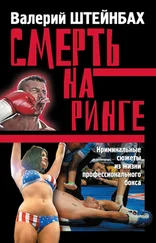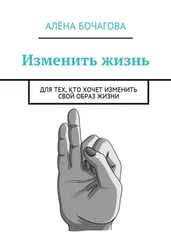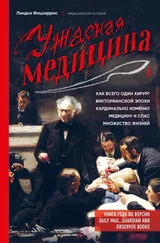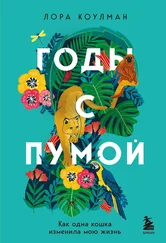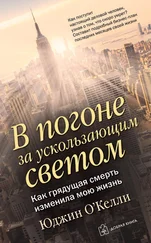Pope Pius XII, The Prolongation of Life [see «How We Learned Not to Resuscitate», note 39].
Pope John Paul II (1995) Evangelium Vitae, March 25, www.vatican.va.
Unitarian Universalist Association. The Right to Die with Dignity. 1988 General Resolution. www.uua.org/statements/statements/14486.shtml.
The Holy Synod of the Church of Greece, Bioethics Committee (2000) Press release, August 17. Basic positions on the ethics of transplantation and euthanasia. www.bioethics.org.gr.
Steinberg A, Sprung CL. The dying patient: new Israeli legislation. Intensive Care Med . 2006; 32 (8): 1234-7; Weiss RB. Pain management at the end of life and the principle of double effect: a Jewish perspective. Cancer Invest . 2007; 25 (4): 274-47.
Rappaport ZH, Rappaport IT. Brain death and organ transplantation: concepts and principles in Judaism. Adv Exp Med Biol . 2004; 550: 133-37.
Dorff EN. End-of-life: Jewish perspectives. Lancet . 2005; 366 (9488): 862-65.
Dorff, End-of-life.
Dorff, End-of-life.
Foreign Policy. The List: The world’s fastest growing religions. www.foreignpolicy.com/articles/2007/05/13/the_list_the_worlds_fastest_growing_religions. May 2007.
Crabtree S. Gallup World. Religiosity highest in world’s poorest nations. www.gallup.com/poll/142727/religiosity-highest-world-poorest-nations.aspx-1. August 31, 2010.
Padela AI, Arozullah A, Moosa E. Brain death in Islamic ethico-legal deliberation: challenges for applied Islamic bioethics. Bioethics . 2013; 27 (3): 132-39.
Baeke G, Wils JP, Broeckaert B. «Be patient and grateful» — elderly Muslim women’s responses to illness and suffering. J Pastoral Care Counsel . 2012; 66 (3–4): 5.
Banning M, Hafeez H, Faisal S, Hassan M, Zafar A. The impact of culture and sociological and psychological issues on Muslim patients with breast cancer in Pakistan. Cancer Nurs . 2009; 32 (4): 317-24.
Dein S, Swinton J, Abbas SQ. Theodicy and end-of-life care. J Soc Work End Life Palliat Care . 2013; 9 (2–3): 191–208.
Pew Research Center. Religious groups’ views on end-of-life issues. November 2013.
da Costa DE, Ghazal H, Al Khusaiby S. Do Not Resuscitate orders and ethical decisions in a neonatal intensive care unit in a Muslim community. Arch Dis Child Fetal Neonatal Ed . 2002; 86 (2): F115-9; Ebrahim AF. The living will (Wasiyat Al-Hayy): a study of its legality in the light of Islamic jurisprudence. Med Law . 2000; 19 (1): 147-60.
Gupta R. Death beliefs and practices from an Asian Indian American Hindu perspective. Death Stud . 2011; 35 (3): 244-66.
Firth S. End-of-life: a Hindu view. Lancet . 2005; 366 (9486): 682-86.
Desai PN. Medical ethics in India. J Med Philos . 1988; 13 (3): 231-55.
McClain-Jacobson C, Rosenfeld B, Kosinski A, Pessin H, Cimino JE, Breitbart W. Belief in an afterlife, spiritual well-being and end-of-life despair in patients with advanced cancer. Gen Hosp Psychiatry . 2004; 26 (6): 484-86.
Matsumura S, Bito S, Liu H, Kahn K, Fukuhara S, Kagawa-Singer M, et al. Acculturation of attitudes toward end-of-life care: a cross-cultural survey of Japanese Americans and Japanese. J Gen Intern Med . 2002; 17 (7): 531-39.
Pirutinsky S, Rosmarin DH, Pargament KI, Midlarsky E. Does negative religious coping accompany, precede, or follow depression among Orthodox Jews? J Affect Disord . 2011; 132 (3): 401-5.
Pearson SD, Goldman L, Orav EJ, Guadagnoli E, Garcia TB, Johnson PA, et al. Triage decisions for emergency department patients with chest pain: do physicians’ risk attitudes make the difference? J Gen Intern Med . 1995; 10 (10): 557-64.
Pines JM, Hollander JE, Isserman JA, Chen EH, Dean AJ, Shofer FS, et al. The association between physician risk tolerance and imaging use in abdominal pain. Am J Emerg Med . 2009; 27 (5): 552-7.
Bensing J, Schreurs K, De Rijk AD. The role of the general practitioner’s affective behaviour in medical encounters. Psychology and Health . 1996; 11 (6): 825-38.
Geller SE, Burns LR, Brailer DJ. The impact of nonclinical factors on practice variations: the case of hysterectomies. Health Serv Res . 1996; 30 (6): 729-50.
Curlin FA, Lantos JD, Roach CJ, Sellergren SA, Chin MH. Religious characteristics of U. S. physicians: a national survey. J Gen Intern Med . 2005; 20 (7): 629-34.
Curlin FA, Sellergren SA, Lantos JD, Chin MH. Physicians’ observations and interpretations of the influence of religion and spirituality on health. Arch Intern Med . 2007; 167 (7): 649-54.
Curlin FA, Chin MH, Sellergren SA, Roach CJ, Lantos JD. The association of physicians’ religious characteristics with their attitudes and self-reported behaviors regarding religion and spirituality in the clinical encounter. Med Care . 2006; 44 (5): 446-53.
Curlin et al., Physicians’ observations.
Wenger NS, Carmel S. Physicians’ religiosity and end-of-life care attitudes and behaviors. Mt Sinai J Med . 2004; 71 (5): 335-43.
Curlin FA, Nwodim C, Vance JL, Chin MH, Lantos JD. To die, to sleep: US physicians’ religious and other objections to physician-assisted suicide, terminal sedation, and withdrawal of life support. Am J Hosp Palliat Care . 2008; 25 (2): 112-20.
Cohen J, van Delden J, Mortier F, Lofmark R, Norup M, Cartwright C, et al. Influence of physicians’ life stances on attitudes to end-of-life decisions and actual end-of-life decision-making in six countries. J Med Ethics . 2008; 34 (4): 247-53.
Asch DA, DeKay ML. Euthanasia among US critical care nurses. Practices, attitudes, and social and professional correlates. Med Care . 1997; 35 (9): 890–900.
Sprung CL, Maia P, Bulow HH, Ricou B, Armaganidis A, Baras M, et al. The importance of religious affiliation and culture on end-of-life decisions in European intensive care units. Intensive Care Med . 2007; 33 (10): 1732-39.
Romain M, Sprung CL. End-of-life practices in the intensive care unit: the importance of geography, religion, religious affiliation, and culture. Rambam Maimonides Med J . 2014; 5 (1): e0003.
Tierney E, Kauts V. «Do Not Resuscitate» (DNR) policies in the ICU — the time has come for openness and change. Bahrain Medical Bulletin . 2014; 36 (2).
Saeed F, Kousar N, Aleem S, Khawaja O, Javaid A, Siddiqui MF, et al. End-of-life care beliefs among Muslim physicians. Am J Hosp Palliat Care . 2014.
Читать дальше
Конец ознакомительного отрывка
Купить книгу
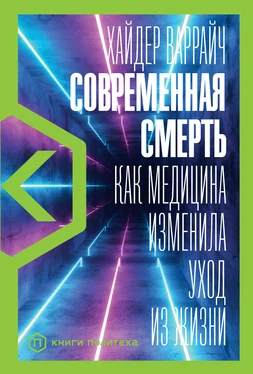

![Людмила Петрушевская - Спасибо! Посвящается тем, кто изменил наши жизни [сборник]](/books/28331/lyudmila-petrushevskaya-spasibo-posvyachaetsya-tem-kto-thumb.webp)
